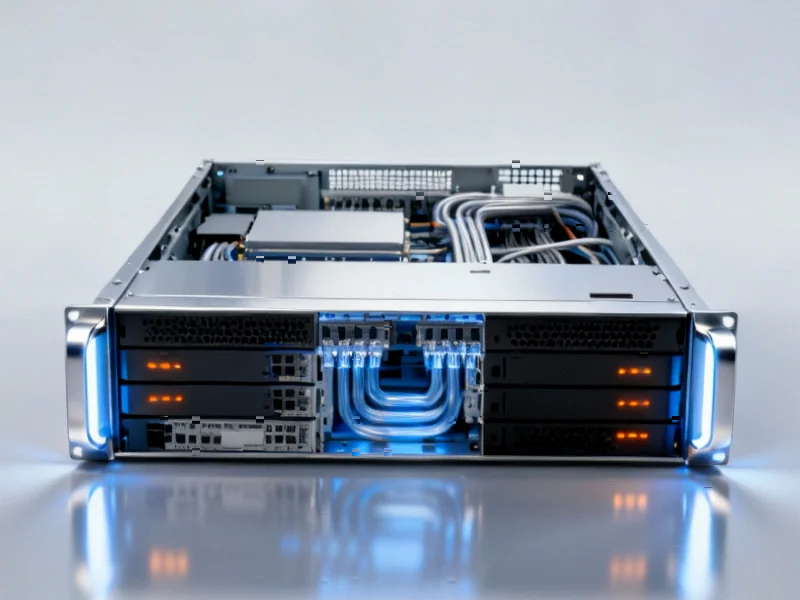The Shift to Wider Rack Infrastructure
The data center industry is undergoing a fundamental transformation as major cloud providers and server manufacturers increasingly standardize on 21-inch Open Rack designs, moving away from the decades-old 19-inch EIA-310 rack standard. This transition represents one of the most significant infrastructure shifts in recent years, driven by the explosive growth of artificial intelligence workloads and the need for more efficient, scalable data center architectures.
Market Momentum and Projected Adoption
According to comprehensive research from Omdia, the wider 21-inch format could capture over 70% of rack shipments by 2030, with hyperscale operators leading the adoption curve. This represents a dramatic acceleration in infrastructure evolution, particularly as AI server demand continues to reshape the technology landscape across multiple sectors. The research firm anticipates rack shipments will outpace server shipments for the first time in a decade, with overall revenue projected to reach approximately $4.1 billion by 2030.
This infrastructure transformation reflects broader industry developments in manufacturing and supply chain optimization, as companies position themselves to meet the growing demands of computational-intensive applications.
Technical Advantages Driving Adoption
The transition to 21-inch Open Rack designs addresses several critical limitations of traditional rack systems. The additional width provides substantial benefits for thermal management, power distribution, and maintenance accessibility—all crucial factors in modern data center operations.
“The wider frame enables more effective airflow management and accommodates larger fans, which is essential for cooling the dense, high-power components found in AI-optimized servers,” explained an industry engineer familiar with the transition. “This becomes increasingly important as processor thermal design power continues to climb and server densities increase.”
The expanded internal space also facilitates more efficient cable management and higher-capacity power distribution systems, addressing key bottlenecks in traditional rack designs. These improvements align with related innovations in software development and computational infrastructure that are reshaping how technology systems are designed and deployed.
Industry Collaboration and Standardization
The move toward 21-inch racks has been accelerated by industry-wide collaboration through the Open Compute Project (OCP), with major server manufacturers including Dell and HPE supporting the modular Data Center Modular Hardware System (DC-MHS). This standardized approach enables compute and storage modules to operate at rack scale rather than as discrete units, improving overall efficiency and scalability.
Omdia’s analysis of upcoming server designs indicates that up to 90% of Dell’s future systems could transition to the wider format, signaling strong manufacturer commitment to the new standard. This standardization effort reflects the growing importance of strategic partnerships and international cooperation in developing resilient technology supply chains.
Hyperscale Adoption and Manufacturing Response
Leading cloud providers including Microsoft, Amazon, Google, Meta, Huawei, and Oracle have already embraced the 21-inch format as their primary rack standard. This widespread adoption among hyperscalers has created a ripple effect throughout the supply chain, with manufacturers reporting robust order pipelines for AI-optimized hardware.
Wiwynn, a major manufacturer serving cloud providers, has reported exceptionally strong demand for AI servers and is expanding production capacity to fulfill long-term orders. This manufacturing expansion aligns with broader market trends in industrial automation and production scaling as companies prepare for sustained growth in computational requirements.
Future Implications for Data Center Design
The combination of higher-capacity racks and modular server designs is poised to redefine global data center planning and scaling strategies. The 21-inch Open Rack architecture provides crucial headroom for future technological evolution, accommodating increasingly powerful processors and higher component densities without requiring fundamental redesigns.
This infrastructure evolution represents a significant step toward more sustainable, efficient data center operations. As the data center industry shifts to 21-inch Open Rack standards, operators gain improved thermal performance, enhanced serviceability, and greater design flexibility—all critical factors in an era of escalating computational demands.
The transition also complements strategic logistics shifts occurring across the technology sector, as companies optimize their physical infrastructure to support evolving business models and customer requirements. Similarly, recent technology deployments in logistics and supply chain management demonstrate how infrastructure optimization is becoming a competitive advantage across multiple industries.
Long-term Industry Impact
As the transition to 21-inch Open Rack designs gains momentum, the implications extend beyond immediate technical improvements. This standardization represents a fundamental shift in how data center infrastructure is conceptualized, deployed, and scaled. The modular approach enabled by Open Rack architecture supports more responsive capacity planning, reduced total cost of ownership, and improved sustainability metrics—all crucial considerations in an increasingly competitive cloud services market.
The industry-wide embrace of this standard underscores the growing recognition that infrastructure flexibility and efficiency are becoming as important as raw computational power in delivering value to end users and maintaining competitive advantage in the rapidly evolving digital landscape.
This article aggregates information from publicly available sources. All trademarks and copyrights belong to their respective owners.
Note: Featured image is for illustrative purposes only and does not represent any specific product, service, or entity mentioned in this article.



